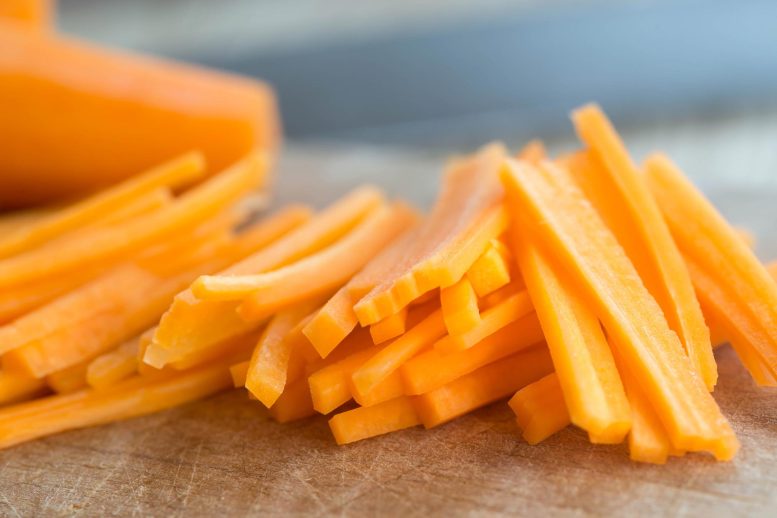The Science Behind Curly Carrots: What You Need to Know About Your Favorite Snack

A research study conducted at the University of Bath has revealed that residual stresses and dehydration are responsible for causing chopped carrots to curl over time. The study was led by student Nguyen Vo-Bui and provides key insights for prolonging the shelf life of carrots and reducing food waste. The innovative research applied mechanical engineering principles to improving food sustainability.
Chopped carrot pieces are a commonly enjoyed snack across the globe, frequently featuring in school lunches, picnic spreads, and party platters throughout the year.
Researchers at the University of Bath have now discovered the scientific explanation behind the curling of this popular root vegetable over time if they are not consumed.
This research was carried out by Mechanical Engineering student Nguyen Vo-Bui as a part of his final-year project during the challenging circumstances of the 2021 Covid-19 lockdowns.
In the absence of laboratory access, Nguyen sought to identify the external and shape-related factors that most significantly affect the shelf life of carrots. Using his home kitchen, he successfully characterized, analytically modeled, and verified the aging process of over 100 Lancashire Nantes carrot halves (chopped lengthwise) by leveraging Finite-Element (FE) models, typically used in structural engineering.
It was concluded in the study that residual stresses and dehydration primarily contribute to the curling of carrot pieces. The stiffer outer layer of the carrot, or the cortex, when contrasted with the softer core (the vascular cylinder), results in an unbalanced stress differential causing the carrot halves to curl when cut lengthwise. Dehydration exacerbates this curling effect by reducing the stiffness further.
Suggestions from the research team for manufacturers include handling carrots in cold, humid, airtight, and moisture-controlled environments to preserve their natural properties and extend their edible lifespan.
The team asserted that the study provides a predictable methodology for assessing the deformity of cut root vegetables and would likely apply to other plant structures. The inclusion of a new mathematical tool in the study could help food producers redesign food packaging and handling processes, potentially cutting down on food waste.
Despite being one of the highest market-valued crops worldwide, known for their efficient production, carrots suffer from a high waste rate. Approximately 25-30% of wastage occurs before processing and packaging due to deformities, mechanical damage, or infected sections. The convenience of pre-cut, minimally processed carrots could allow for such otherwise wasted carrots to be utilized, effectively reducing overall food waste.
Dr. Elise Pegg, a senior lecturer in Bath’s Department of Mechanical Engineering, co-authored the research paper and oversaw the student study. She remarked that the application of purely mechanical principles -rather than the usual biological perspective- to studying food sustainability, made the study especially unique.
Nguyen's research observed a one-week increase in the curling of carrot halves. The average curvature radius for each carrot fell from 1.61m initially, to 1.1m at the end of the observation period. There was also a 1.32 times reduction in stiffness observed, which could be attributed to the 22% weight loss due to drying out.
Given the application of mechanical principles to the study of vegetables, Nguyen found the research to be both fun and surprising. He is currently pursuing his PhD at the University of Bath, investigating residual stresses in porous ferroelectric ceramics.
The project had its challenges, including the procurement and subsequent cooking of the 30kg of carrots required for experimentation. Nguyen and his flatmates were creative in the kitchen, making dishes such as carrot cake, Indian carrot dessert Gajar Ka Halwa, carrot pesto, and more to utilize the carrots in the following days.




